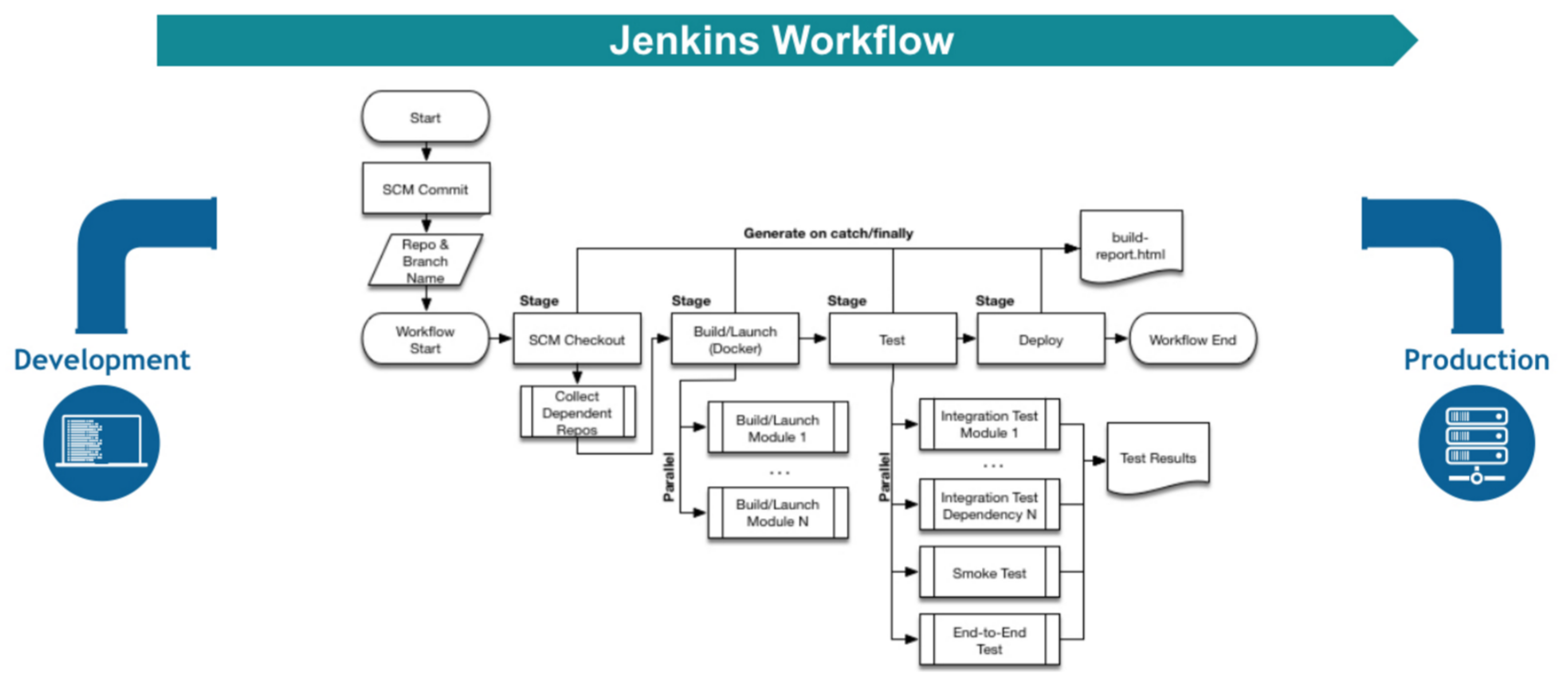Continuous Localization Testing with Jenkins and WonderProxy
Making sure your website feels local wherever it appears isn’t an option. It’s what customers expect. But tracking region-specific details can get messy fast. It's not easy to do when you’re releasing updates every week. Translating your content is only part of the process; knowing everything works when it’s live is another.
Continuous localization testing helps you stay on top of issues without slowing the team down. Adding WonderProxy to your Jenkins pipelines reveals how your site behaves automatically. It lets you check dozens of locations without juggling VPNs or running manual spot checks. It also helps you catch issues before they slip into production, such as missing translations or incorrect language.
If you’ve ever been burned by localization bugs making it past QA, this approach takes the guesswork out of the process and makes every release feel more reliable.
What is continuous localization testing?
Continuous localization testing means running checks automatically whenever new code is built or deployed. Instead of relying on manual reviews or spot checks, you receive quick feedback on how your site appears and functions in different regions. This approach gives testers a few clear benefits:
- Translation checks: Catch translation issues before they go live.
- Formatting validation: Spot problems with dates, currencies, and measurements early.
- Geo-targeting review: Confirm regional content and features appear correctly.
In agile environments, localization can’t be an afterthought. Integrating these checks into your CI/CD pipelines enhances quality while maintaining fast release cycles.
Getting started with Jenkins Automation
If you’re new to Jenkins, think of it as the backbone behind automation workflows. Jenkins is an open-source tool that helps teams automate builds, run tests, and deploy code with very little manual effort.
One reason so many teams rely on Jenkins is its flexibility. It features a large library of plugins that let you connect almost any service or tool you already use. You can spin up cloud environments, kick off automated tests, or send updates to your team in Slack, all through plugins built for these jobs.
Jenkins also supports pipelines as code, allowing you to define your entire build and test process in a simple text file. This setup makes it easy to version workflows, share them across teams, and tweak them over time.
What makes Jenkins stand out:
- Highly extensible: Jenkins can be adapted to fit a wide range of workflows.
- Well-supported community: Thousands of users share guides, build plugins, and answer questions.
- Mature plugin ecosystem: Connects smoothly with testing tools, deployment systems, and reporting platforms.
- Flexible pipelines: Supports external tools, shell scripts, and coordination across different environments.
Together, these features help teams catch issues early and keep sites working reliably for users everywhere.
Here’s a typical Jenkins workflow diagram showing how builds, tests, and deployments are integrated. You can add localization testing stages, like the ones we described earlier, right alongside your existing automation steps.

How WonderProxy helps you test localization
WonderProxy lets your QA team send test traffic to over 250 locations worldwide. Instead of relying on VPNs or hoping your staging environment matches production, you can view how your site behaves for real users in each region.
Many teams use WonderProxy to catch the details that can easily slip by when you’re managing multilingual sites. Examples include checking that country-specific legal disclaimers appear correctly, confirming prices show up in the right currency, and making sure translation files load as expected.
Teams also rely on WonderProxy to validate tax calculations, confirm that promotions only display in the right countries, and ensure geo-blocked content stays restricted. With this level of visibility, you can catch regional issues early and keep your releases consistent for users everywhere.
Connecting WonderProxy to your Jenkins pipelines
This section guides you through the main steps to integrate WonderProxy into your Jenkins setup so you can run continuous localization tests automatically.
Step 1: Set up WonderProxy credentials
- Register your WonderProxy account.
- In Jenkins, create a secure credential store to keep your WonderProxy username and proxy token safe.
- Make sure your pipeline has access to these credentials when it runs.
Step 2: Configure test environments
- Decide which WonderProxy locations you want to use for testing.
- Create configuration files or environment variables that specify these locations.
- Update your test scripts to read this configuration and route traffic through the correct proxy servers.
Step 3: Write localization tests
- Use a framework like Selenium or Cypress to build tests that check:
- Page language and translations.
- Region-specific content or legal notices.
- Dynamic elements that should change based on location.
- Configure your HTTP requests to pass through WonderProxy locations so each test reflects the target region.
Step 4: Create Jenkins pipeline jobs
- Define pipeline stages, including:
- Checking out your code.
- Installing dependencies.
- Running your localization tests.
- Aggregating and publishing results.
- Use Jenkins plugins or declarative pipeline syntax to run tests across multiple regions in parallel if needed.
Step 5: Reporting and notifications
- Set up test reports that highlight any localization failures.
- Configure email or Slack notifications to alert the team when an issue occurs.
- Optionally, store screenshots or logs to help debug issues later.
Here's a short example of a pipeline snippet showing a region-based test run:
stage('Test - France') {
steps {
sh '''
export HTTP_PROXY=http://username:password@fr.wonderproxy.com:11000
npm run test:localization
'''
}
}
This Jenkins declarative pipeline example sets the HTTP proxy to WonderProxy’s France server before running your localization tests.

Best practices for continuous localization testing
A few simple habits can make your Jenkins pipelines with WonderProxy smoother and more reliable. Here are some practical tips to keep in mind:
- Prioritize high-traffic regions: Start by covering the markets where you have the most users or revenue. Once those areas are solid, expand your tests to less active regions.
- Validate critical workflows: Focus first on key flows like checkout, sign-up, and any compliance or consent banners. These are often the places where localization issues have the most significant impact.
- Run tests in parallel: Running all your regional tests simultaneously reduces pipeline time. It also helps you catch issues faster, rather than waiting for one region to finish before moving on to the next.
- Automate test data management: Set up consistent seed data to prevent test failures due to missing or outdated content. This keeps your results stable even as your app evolves.
- Monitor proxy performance: All networks experience occasional slowdowns or connection issues. Including retries or fallback steps makes sure your pipeline keeps running smoothly if a proxy ever times out. WonderProxy publishes live server status.
Take the time to establish these practices early. Doing so will save you headaches later and allow every release to meet the expectations of your global users.
What to do when things go wrong
Even with a solid Jenkins setup, localization testing can encounter problems. Here are a few common issues and ways to handle them:
- Flaky tests from network latency: Sometimes tests fail simply because a connection takes longer than expected. Try increasing your timeouts or adding retries to reduce false negatives.
- Incorrect language fallbacks: You might see content default to the wrong language. Double-check that both the Accept-Language header and geolocation settings are set correctly in your tests.
- Credential misconfiguration: Pipelines often break if credentials aren’t passed in as expected. Make sure Jenkins secrets are stored securely and injected correctly during builds.
- IP-based blocking: Some APIs will block or rate-limit traffic coming from proxy servers. When possible, use test API keys or sandbox environments to avoid unexpected blocks.
Setting up these safeguards can save you hours of troubleshooting later. A few backup plans will help your team stay focused on improving the product rather than tracking down avoidable issues.
Scaling up your localization testing
Once the basics are in place, it’s worth thinking about how to expand your setup to cover more regions. As your Jenkins pipelines mature, here are a few ways to take your localization testing further:
- Scaling test coverage: When your app reaches more countries, scale your WonderProxy locations to match its growing audience. Testing in new regions can help you catch unexpected issues and maintain a consistent experience everywhere.
- Integrating with other tools: Pair WonderProxy with services like BrowserStack or Sauce Labs to test across different browsers and devices. Combining these tools gives you a clearer picture of how users use your site.
- Observability: Send your test results to dashboards like Grafana or whichever reporting tools your team prefers. Having this visibility makes it easier to spot trends and respond quickly when something goes wrong.
- Continuous improvement: Keep looking for ways to improve your workflows and grow your test coverage over time. Reviewing your results regularly helps you stay ahead of any new regional requirements.
Building on these practices gradually helps your team scale without overloading your Jenkins pipelines. Over time, you’ll create a localization process that works seamlessly in Jenkins and stays reliable as your product grows.
If you’re planning to expand your localization coverage, WonderProxy’s Guide to Creating a Localized Test Plan walks you through scoping regions, defining test cases, and setting priorities.
Make localization part of every build
Continuous localization testing with Jenkins and WonderProxy creates a process you can count on in every release cycle. When localization checks run automatically, your team spends less time worrying about last-minute surprises and more time improving the product itself.
Take a moment to review your workflows and see where these tools can help you deliver a smoother experience for customers everywhere.